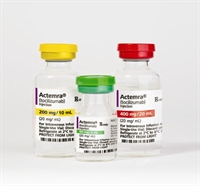The immune system is a complex of cells and antibodies designed normally to "seek and destroy" invaders of the body, particularly infections.
Patients with autoimmune diseases have antibodies in their blood that attack their own body tissues; they can be associated with inflammation. Because it can affect other organs, rheumatoid arthritis refers to a systemic illness and is sometimes called rheumatoid disease.
When rheumatoid arthritis a chronic, which means it can take years, patients may experience a long period of time with no symptoms. Typically, rheumatoid arthritis is a progressive disease that has the ability to destroy joints.
A joint is where two bones meet to allow movement of body parts. Arthritis means joint inflammation. Joint inflammation of rheumatoid arthritis causes swelling, pain, stiffness and redness. Inflammation of rheumatoid disease can also occur in tissues around the joints, such as tendons, ligaments and muscles.
In some patients with rheumatoid arthritis, chronic inflammation leads to destruction of cartilage, bone and ligaments causing deformity of joints. Studies have shown that progressive damage to the joints does not necessarily correlate with pain, stiffness or swelling in joints.
Rheumatoid arthritis is a rheumatic disease three times more common among men than women. The condition can be triggered at any age but often occurs in people who have passed the age of 60 years.
The causes that trigger this disease are not yet known. Although infectious agents, such as viruses, bacteria and fungi have been suspected as possible causes, this assumption proved to be false. Some researchers believe that infections or environmental factors may result that immune system to attack the body tissues, resulting in inflammation among several organs of the body, such as eyes and lungs.
Whatever the cause, the result is the same: an immune system that allows joint inflammation and swelling occasionally. Surrounding factors seem to play a role in causing rheumatoid arthritis. Recently, scientists reported that smoking increases the risk of developing the disease.
Degree of joint destruction of rheumatoid arthritis varies according to each patient. Patients suffering from a mild form of rheumatoid arthritis, occur after several years of activity, can be treated with anti-inflammatory drugs and some rest. In general, joint function are improved when the patient is treated early, with slow-acting drugs.


